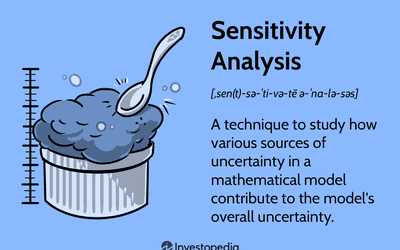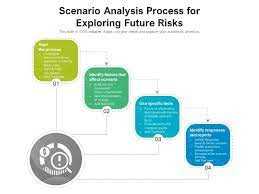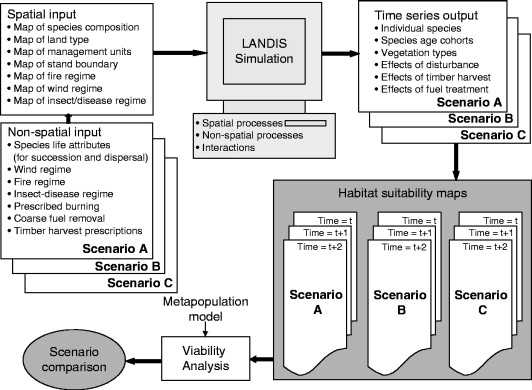Exploring the Steps and Benefits
Scenario analysis is a valuable tool that allows businesses to assess potential future outcomes and make informed decisions. By considering different scenarios and their potential impacts, businesses can better understand the risks and opportunities they may face.
The process of scenario analysis typically involves the following steps:
1. Identify the key factors: The first step in scenario analysis is to identify the key factors that could significantly impact the business. These factors can include economic conditions, market trends, technological advancements, regulatory changes, and competitive landscape, among others.
2. Define the scenarios: Once the key factors are identified, different scenarios are developed based on various combinations of these factors. Each scenario represents a different possible future outcome. It is important to create a range of scenarios that cover both optimistic and pessimistic possibilities.
5. Make informed decisions: The final step in scenario analysis is to use the insights gained to make informed decisions. By considering the potential outcomes of different scenarios, businesses can develop contingency plans and make strategic decisions that align with their goals and objectives. This can help businesses navigate uncertainties and make proactive choices that maximize their chances of success.
Scenario analysis offers several benefits to businesses:
1. Improved decision-making: By considering different scenarios and their potential impacts, businesses can make more informed decisions. This allows them to anticipate potential challenges and opportunities, and develop strategies accordingly.
3. Strategic planning: Scenario analysis provides businesses with insights that can inform their strategic planning process. By considering different scenarios, businesses can identify potential future trends and adjust their strategies accordingly to stay competitive.
4. Enhanced adaptability: Scenario analysis helps businesses build resilience and adaptability. By considering different scenarios, businesses can develop contingency plans and be better prepared to respond to unexpected events or changes in the business environment.
5. Stakeholder communication: Scenario analysis can also be a valuable tool for communicating with stakeholders. By sharing the insights gained from scenario analysis, businesses can demonstrate their proactive approach to risk management and decision-making, which can enhance stakeholder confidence and trust.
Real-Life Examples of Scenario Analysis

Scenario analysis is a powerful tool used in various industries to assess potential outcomes and make informed decisions. By creating different scenarios based on different variables and assumptions, businesses can better understand the potential impact of various events or changes in the market.
Example 1: Retail Industry
Imagine a scenario where a retail company is considering expanding its operations to a new market. They can use scenario analysis to assess the potential outcomes based on different factors such as consumer demand, competition, and economic conditions.
In one scenario, the company assumes high consumer demand, low competition, and a strong economy. They analyze the potential profit margins, market share, and overall success of the expansion based on these assumptions.
In another scenario, they assume moderate consumer demand, moderate competition, and a stable economy. They compare the potential outcomes with the previous scenario to understand the risks and potential challenges they may face.
By creating multiple scenarios, the retail company can make more informed decisions about whether to proceed with the expansion, how to allocate resources, and what strategies to implement.
Example 2: Energy Sector
In the energy sector, scenario analysis is often used to assess the potential impact of different energy policies and market conditions on companies’ operations and profitability.
For example, a renewable energy company may use scenario analysis to evaluate the potential outcomes of different government policies and regulations. They can create scenarios based on factors such as government subsidies, carbon pricing, and renewable energy targets.
In one scenario, the company assumes favorable government policies and a growing demand for renewable energy. They analyze the potential growth opportunities and profitability based on these assumptions.
In another scenario, they assume less favorable government policies and a slower adoption of renewable energy. They assess the potential risks and challenges they may face in such a scenario.
By conducting scenario analysis, the energy company can better understand the potential impact of different policy scenarios on their business and make strategic decisions accordingly.
Overall, scenario analysis is a valuable tool that allows businesses to explore different possibilities, assess risks, and make informed decisions. By considering various scenarios, companies can better prepare for the future and adapt their strategies to changing market conditions.
Case Studies and Lessons Learned
Scenario analysis has been widely used in various industries to evaluate and plan for potential future scenarios. Here are some real-life case studies that demonstrate the effectiveness of scenario analysis:
1. Oil and Gas Industry

In the oil and gas industry, scenario analysis has been used to assess the impact of changing market conditions on investment decisions. For example, a company may use scenario analysis to evaluate the potential outcomes of different oil prices, geopolitical events, and regulatory changes. By considering a range of scenarios, companies can better understand the risks and opportunities associated with their investments and develop strategies to mitigate potential losses.
2. Financial Services

Financial institutions often use scenario analysis to assess the potential impact of economic and market changes on their portfolios. For instance, a bank may simulate different interest rate scenarios to evaluate the potential effects on its loan portfolio and profitability. By conducting scenario analysis, financial institutions can identify potential vulnerabilities and take proactive measures to manage risks and optimize their performance.
3. Supply Chain Management

Scenario analysis is also valuable in supply chain management to assess and plan for potential disruptions. For example, a manufacturing company may use scenario analysis to evaluate the impact of natural disasters, transportation disruptions, or supplier failures on its supply chain. By identifying potential risks and developing contingency plans, companies can minimize the impact of disruptions and ensure the continuity of their operations.
These case studies highlight some of the key lessons learned from using scenario analysis:
- Scenario analysis provides a structured approach to assess and plan for potential future scenarios.
- By considering a range of scenarios, organizations can better understand the risks and opportunities associated with their decisions.
- Scenario analysis helps identify potential vulnerabilities and develop strategies to mitigate risks.
- It enables organizations to make more informed decisions and optimize their performance.
- Scenario analysis is a valuable tool for strategic planning, risk management, and decision-making in various industries.
Common Questions about Scenario Analysis
Scenario analysis is a valuable tool for decision-making and risk management, but it can also raise some common questions. Here are some frequently asked questions about scenario analysis:
1. What is the purpose of scenario analysis?
Scenario analysis helps organizations understand the potential impact of different future scenarios on their business. It allows them to explore various possibilities and make informed decisions based on the likelihood and potential outcomes of each scenario.
2. How is scenario analysis different from traditional forecasting?
While traditional forecasting focuses on predicting a single future outcome, scenario analysis considers multiple possible futures. It takes into account various factors and uncertainties that can affect the outcome, providing a more comprehensive and flexible approach to decision-making.
3. How are scenarios developed?
Scenarios are developed through a structured process that involves identifying key drivers, defining the range of possible outcomes for each driver, and combining them to create different scenarios. This process requires input from experts, data analysis, and careful consideration of external factors.
4. How can scenario analysis help in risk management?
Scenario analysis allows organizations to assess and manage risks by evaluating the potential impact of different scenarios. It helps identify vulnerabilities, develop contingency plans, and make informed decisions to minimize potential losses and maximize opportunities.
5. What are the limitations of scenario analysis?
Scenario analysis is based on assumptions and simplifications, which can introduce uncertainty and limitations. It relies on historical data and expert judgment, which may not always accurately predict future outcomes. Additionally, scenario analysis cannot account for unforeseen events or black swan events that can significantly impact the business.
6. How often should scenario analysis be conducted?
The frequency of scenario analysis depends on the nature of the business and the level of uncertainty it faces. Some organizations conduct scenario analysis on a regular basis, while others may only perform it when significant changes or disruptions occur in the industry or market.
Overall, scenario analysis is a powerful tool that can help organizations navigate uncertainty, make informed decisions, and improve their risk management strategies. By considering multiple possible futures, organizations can better prepare for different outcomes and increase their resilience in an ever-changing business environment.

Emily Bibb simplifies finance through bestselling books and articles, bridging complex concepts for everyday understanding. Engaging audiences via social media, she shares insights for financial success. Active in seminars and philanthropy, Bibb aims to create a more financially informed society, driven by her passion for empowering others.
